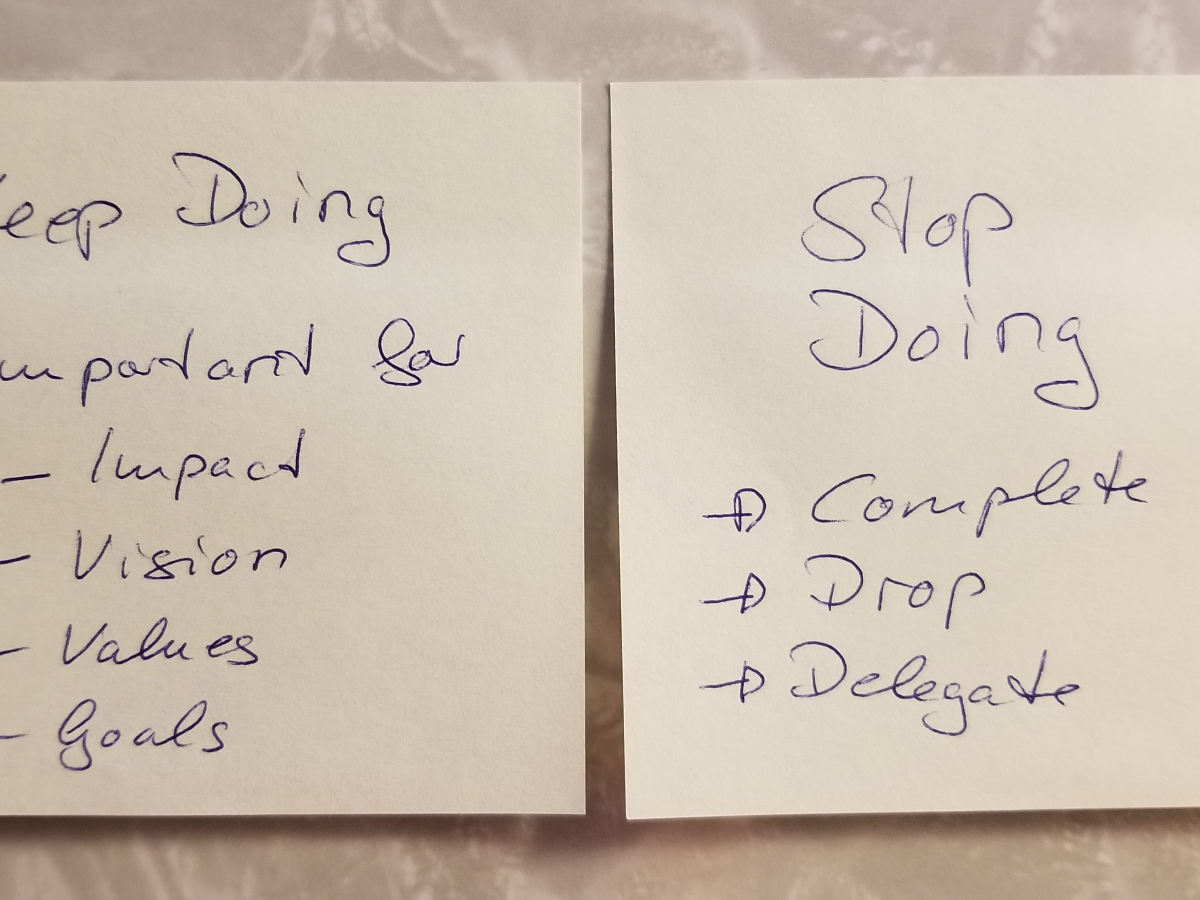Let’s maybe start by looking at some of the biggest mistakes you can make when trying to build great products:
- Assuming you know (rather than researching, asking and really listening as part of your discovery work)
- Not asking why often enough (and never getting to the core motivation behind somebody’s request)
- Ignoring those signals pointing at change (or never even measuring anything, or not measuring what really matters)
- Failing to be clear on the impact you want to create, the vision and the values you stand for (which does not allow your team to innovate and co-create with you in that context and forces you to constantly adjust their direction)
- Failing to notice how much work is in the system (which leads to stressed and frustrated teams because they constantly overextend themselves)
- Failing to stop doing things that don’t work (because you never notice that it’s happening and you’re not clear on what success would look like)
- Not noticing the gift of a lesson in any failure or mistake (and rather focusing on blaming, defensiveness or justifications)
- Not celebrating milestones and successes (maybe again because you don’t pause to take notice and don’t make time to celebrate)
- Not understanding and appreciating the beauty and value in diverse opinions (while the messenger is potentially a bit imperfect in their delivery)
- Not listening enough, not giving enough space for everyone to contribute (which leads to less diverse viewpoints – the opposite of a breeding ground for innovation)
I could keep going with that list, and I know it well because I have made every mistake on that list at some point. Which brings me to the quality of presence, which is lacking as a mindset and behavior with that list above. The good news is, that it can be practiced with any kind of mindfulness technique and will result in both a more focused and attentive mindset, as well as a way of being that flips this list on its head and opens the space for success in product.
What you want to do to be successful in product:
- Actually understand your clients (you do that by listening with full presence)
- Stay curious and ask deepening questions (you do that by being aware of the value of something like the 5 Why Technique and then again being present and listening)
- Notice the signals that point at change (and courageously look at those market signals and KPIs that start telling you something is off – requires you to keep looking at them)
- Be clear on the purpose, strategy, vision and impact you want to create (which means you have taken time to co-create, clarify and align on them with your teams)
- Notice stress levels in the team and help the team to optimize for a sustainable level of work in progress
- Frame any mishap, mistake, bug, outage time, social media shitstorm, etc… as a great gift, a signal for pointing your attention to the lesson it holds. Learn it, apologize if needed and move on wiser and stronger (which takes your ability to notice the shame, defensiveness and potentially even anger that often show up, park those and choose to explore the gifts of the lesson to be learnt instead)
- Celebrate your wins, milestones reached and successes. Everyone loves the appreciation, gratitude and happiness that comes with this! (And if you can actually be present to and enjoy the celebration it builds so much joy, happiness, appreciation, power and trust into your team)
- Celebrate and tap into the diverse viewpoints and strengths in your team. They are the source and breeding ground of innovation, create moments of surprise, can be super funny and are the reason why a group of people is stronger than any one individual. I have never actually seen somebody build and scale a massive product solution on their own. It usually takes a village of skills: research, engineering, QA, legal, sales, product, marketing, support, etc… The better you work together, the more impact and success you create.
- Listen and stay curious and encourage everyone to bring in their voice, insights and ideas. Brilliant tweaks on something that really accelerate growth can come from anybody in or around the team. Any of your clients, stakeholders, team members, coaches, business partners or friends might say something that gets you ahead. If only you can be present to just listen.
All of these share a capacity to actually be with what is there. A capacity to listen and understand. A capacity to stay curious in the face of obstacles and opposition. A capacity to always be open for change. A capacity to always learn and grow. In short a capacity to be present with what is right there in front of you, an awareness to observe and choose your mindsets, observe and choose to regulate your emotions, observe and choose to notice what your body is telling you (in how it creates tension or relaxation, in your intuition, etc… )
So why should you practice to be present?
After many years of practicing the muscles of noticing my inner states and channeling certain mindsets with simple exercises I think that this presence is what ultimately leads to
- joy,
- resilience,
- an ability to deal with uncertainty,
- an ability to tap into creativity, curiousity and resourcefulness despite complex circumstances
- an ability to create the impact and life you want
Mindful presence is the foundation of psychological safety, creative tension, your ability to appreciate diversity as an asset, act in inclusive ways, be clear on purpose, impact and values: all those things that enable teams to reach the impact they want. Especially when they are working on innovative new product solutions. Nobody has walked their path ahead of them. Product teams are constantly evolving, constantly adapting, constantly exploring, constantly learning and iterating their path to successfully reaching the impact they are looking to create.
So how do you practice to become present?
The good news is, it’s very simple: You pause, you sit, you reflect, you sense what is in the moment (physically, emotionally and on your mind). You can absolutely do this on your own. Or you work with a coach, which will get you there faster. Coaching systematically builds your inner mindset models and anchors them emotionally. You will practice anticipating your saboteurs and defining your strategies of how to deal with them BEFORE they show up. You work on your inner sense of being naturally creative, resourceful and whole and how to tap into those energies even in high stress contexts. As a result, you’re better capable to show up kind, compassionate, curious, clear and with that interdependent mindset that takes the needs of your clients, team members and other stakeholders appropriately into account.
Just 12 minutes of a mindfulness practice each day can substantially change your ability to focus, improve your attention, reduce your stress levels and give you pause to sense into what information is right there in your body and your context. There is a reason why there is so much information out there that all successful people meditate. They train their ability to be present. A skill that will be useful in everything you do, professional as well as in your personal lifes. Start with a simple practice yourself, or choose to work with mentors or coaches. They’ll get you there much faster!
___________________________
If you would like to explore this more: reach out for a free discovery session with me.
I coach, speak, do workshops and blog about #leadership, #product leadership, #innovation, the #importance of creating a culture of belonging and how to succeed with your #hybrid or #remote teams.
Get my latest blog posts delivered directly to your inbox.
Your email address will only be used for receiving emails with my latest blog posts in them. You can unsubscribe at any point in time.






